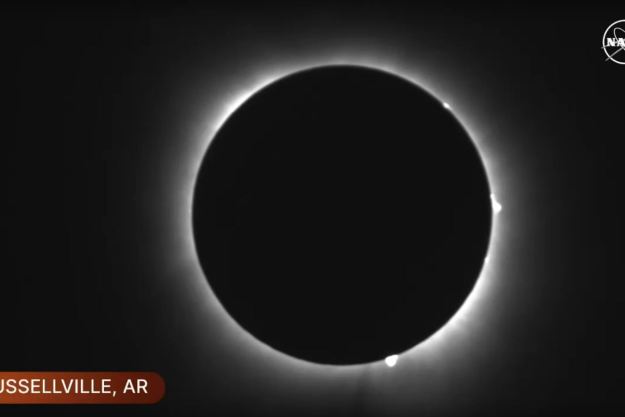NASA’s Lucy spacecraft, which launched in 2021, is on its way to the orbit of Jupiter to study the Trojan asteroids there. It won’t arrive there until 2027, but the spacecraft will have the opportunity to do some extra science before then, as it will soon be making a flyby of another asteroid called Dinkinesh. At less than half a mile wide, this small asteroid sits in the main asteroid belt between Mars and Jupiter, and it will be Lucy’s first asteroid flyby.

Lucy is scheduled to make the flyby on November 1, in a maneuver that was added to the mission as a bonus goal earlier this year. The team members realized that Lucy would be traveling close enough to the asteroid that they could make some extra maneuvers and perform a flyby, giving them the chance to check out some of the spacecraft’s asteroid-tracking instruments.
It’s also the first time that the asteroid will have been observed so close. “This is the first time Lucy will be getting a close look at an object that, up to this point, has only been an unresolved smudge in the best telescopes,” said Hal Levison of the Southwest Research Institute, Lucy principal investigator, in a statement. “Dinkinesh is about to be revealed to humanity for the first time.”
The flyby will be used to test out the spacecraft’s system for locating an asteroid and locking its instruments onto its location as it flies past. This is important as when Lucy eventually reaches its targets in the Trojans, it will perform flybys of 10 asteroids rather than going into orbit around any one of them. With the tracking system in place, the spacecraft should be able to point its cameras more precisely and collect more accurate data.
“We’ll know what the spacecraft should be doing at all times, but Lucy is so far away it takes about 30 minutes for radio signals to travel between the spacecraft and Earth, so we can’t command an asteroid encounter interactively,” said Mark Effertz, Lucy chief engineer at Lockheed Martin Space. “Instead, we pre-program all the science observations. After the science observations and flyby are complete, Lucy will reorient its high-gain antenna toward Earth, and then it will take nearly 30 minutes for the first signal to make it to Earth.”
Editors' Recommendations
- NASA gives Starliner’s first crewed launch the go-ahead
- Voyager 1 spacecraft is still alive and sending signals to Earth
- NASA needs a new approach for its challenging Mars Sample Return mission
- Junk from the ISS fell on a house in the U.S., NASA confirms
- Watch NASA begin testing its Orion capsule for lunar flyby




